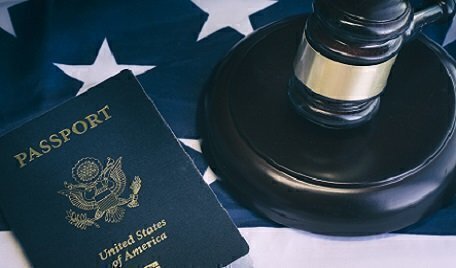Using President Trump’s own words against him, a federal appeals court on Thursday added a second legal defeat for the White House’s latest attempt to bar the entry into the U.S. of people from six Muslim-majority nations. A divided U.S. Court of Appeals for the Fourth Circuit ruled that the President’s purpose in issuing the order last September probably was to impose an unconstitutional “Muslim ban,” based not on national security but on religious bias.
 The Administration’s argument that the order was designed to protect America from potential terrorists coming from abroad “lies at odds with the statements of the President himself,” the court majority said. Those challenging the order as unconstitutional, the opinion added, not only claimed that the order was “driven by anti-Muslim bias,” they also “offered undisputed evidence of such bias.”
The Administration’s argument that the order was designed to protect America from potential terrorists coming from abroad “lies at odds with the statements of the President himself,” the court majority said. Those challenging the order as unconstitutional, the opinion added, not only claimed that the order was “driven by anti-Muslim bias,” they also “offered undisputed evidence of such bias.”
That evidence, recounted in detail in the court’s main opinion, included anti-Muslim statements that the President had made when he was campaigning for the office, but also similar statements he had made since taking office some 13 months ago. The Circuit Court said that it was relying only on what the President had said since entering the White House, thus leaving aside as a legal matter his campaign comments.
The ruling, in a case that originated in Maryland, came just weeks after the Supreme Court had agreed to weigh the presidential order’s legality in a case that originated in Hawaii. The U.S. Court of Appeals for the Ninth Circuit found in the Hawaii case that the order probably went beyond the powers that Congress had given the President to control immigration.
The Supreme Court has not yet scheduled its hearing on the Hawaii case, but is expected to consider it at a public session in April. It appears to be too late for the Administration to get the Justices to also rule on the new decision by the Fourth Circuit Court in the Maryland case.
In both of the cases, the entry restrictions marked the third attempt by President Trump to try to fashion an order that would be upheld in the courts, after two previous attempts had failed. The third order is broader than the earlier two, because it would make the restrictions permanent, not temporary, if the order withstands court review.
The Fourth Circuit Court had reviewed the order before a full, en banc bench of 13 of its judges. Spelling out various views in eight separate opinions totaling 285 pages, the bottom line was that the Circuit Court had split 9-to-4 in finding that Trump’s order probably will be found – after full court review – to be unconstitutional. While the judges discussed questions of federal immigration law as well as the constitutional issue of religious discrimination, the only result that attracted a clear majority was the ruling on the religious issue.
Although two appeals courts have now agreed that the third attempt was legally flawed, the fact is that the presidential order is in full effect now, under a temporary order the Supreme Court had issued in December even before it opted to take on the Hawaii case for full review.
In taking the Hawaii case to the Justices, the Administration had asked only for a ruling on issued under immigration laws, but the Justices added to their review the constitutional question based on the claim of religious discrimination.
If the Justices were to rule that President Trump did not have the authority under immigration laws to issue the entry restrictions, they might not have to reach the constitutional question. But the lengthy discussion in the several opinions issued by the Fourth Circuit Court made it clear that the questions of presidential authority under immigration law are closely intertwined with issues under the Constitution – especially the question of religious discrimination under the First Amendment.
In the Thursday ruling, Chief Judge Roger L. Gregory wrote the main opinion for the majority on the constitutional issue, and Circuit Judge Paul V. Niemeyer wrote the main dissenting opinion. Three of the dissenting judges argued that the courts simply had no authority to rule on the use of presidential power to exclude foreign nationals from entering the U.S. The fourth dissenting judge said that the challengers had the right to bring their case, but he concluded that they had not proved there was a violation.
President Trump’s September order strictly limited the entry of foreign nationals from these six nations, each of which has a majority Muslim population: Chad, Iran, Libya, Somalia, Syria and Yemen. The order also extended to North Korea and to some government officials in Venezuela; neither of those nations has a Muslim majority, and the order was not challenged as to their nationals.
Legendary journalist Lyle Denniston has written for us as a contributor since June 2011 and has covered the Supreme Court since 1958. His work also appears on lyldenlawnews.com.







